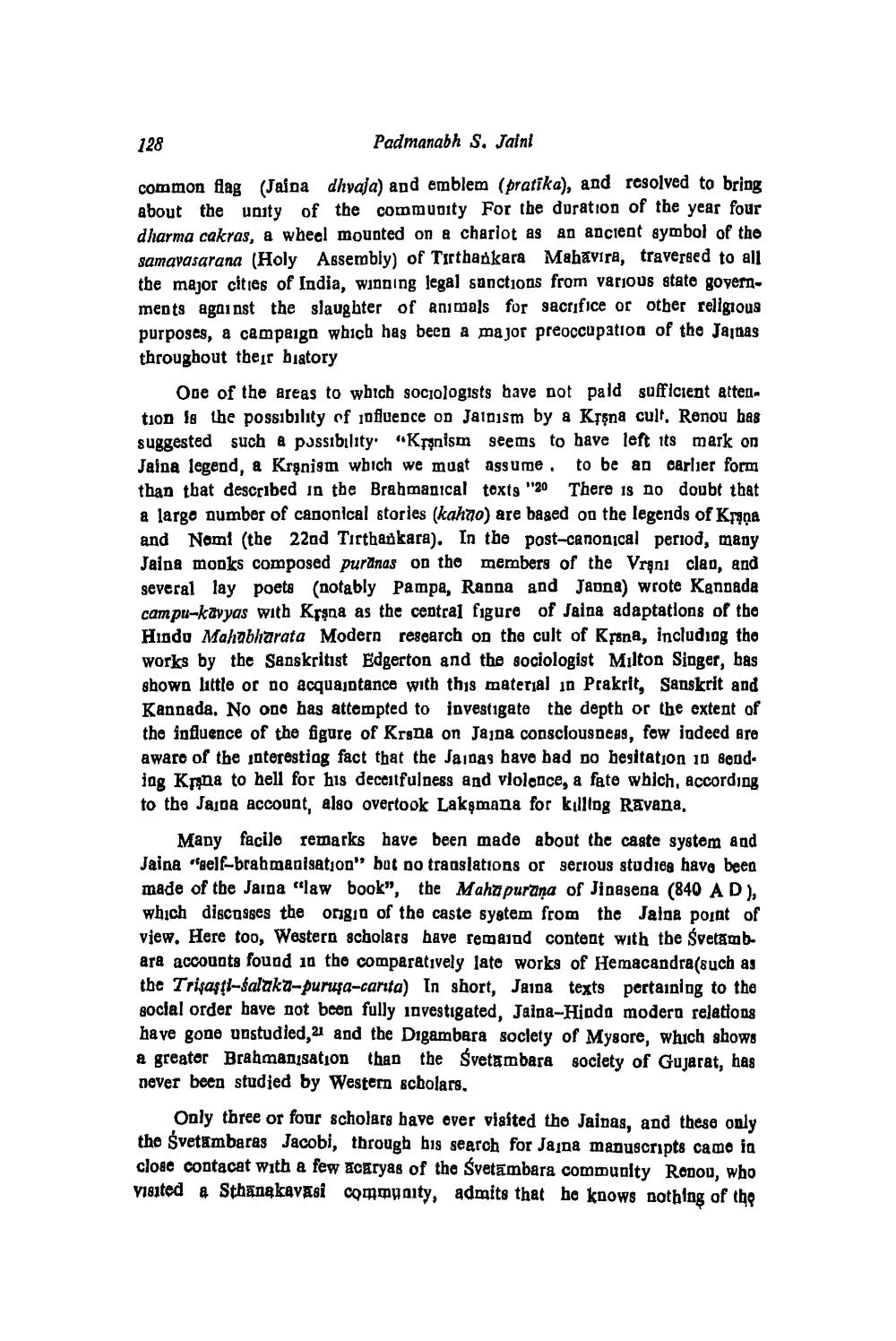________________
128
Padmanabh S. Jaini
common flag (Jalpa dhyaja) and emblem (pratika), and resolved to bring about the unity of the community For the duration of the year four dharma cakras, a wheel mounted on a chariot as an ancient symbol of the samavasarana (Holy Assembly) of Tirthankara Mahavira, traversed to all the major cities of India, winning legal sanctions from various state governments against the slaughter of animals for sacrifice or other religious purposes, a campaign which has been a major preoccupation of the Jainas throughout their history
One of the areas to which sociologists have not paid sufficient attention in the possibility of jofluence on Jainism by a Kīşna cult. Renou has suggested such a possibility: "Kļşnism seems to have left its mark on Jaina legend, a Krşnism which we must assume to be an earlier form than that described in the Brahmanical texts "30 There is no doubt that a large number of canonical stories (kahuo) are based on the legends of Krina and Naml (the 22nd Tirthankara). In the post-canonical period, many Jaina monks composed puranas on the members of the Vrsni clan, and several lay poets (notably Pampa, Ranna and Janna) wrote Kannada campu-kavyas with Krsna as the central figure of Jaina adaptations of the Hindu Mahabharata Modern research on the cult of Krena, including tho works by the Sanskritist Edgerton and the sociologist Milton Singer, bas shown little or no acquajptance with this material in Prakrit, Sanskrit and Kannada. No one has attempted to investigate the depth or the extent of the influence of the figure of Krona on Jaipa consciousness, few indeed are aware of the interesting fact that the Jajnas bave bad do hesitation 10 seding Kpna to hell for his deceitfulness and violence, a fate which, according to the Jaiba account, also overtook Lakşmana for killing Ravana,
Many facile remarks have been made about the caste system and Jaina "aelf-brahmanisation" but no translations or serious studies have been made of the Jaina "law book”, the Mahupuruņa of Jinasena (840 AD), which discusses the ongia of the caste syatem from the Jalna point of view. Here too, Western scholars have remaind content with the Svetambara accounts found in the comparatively late works of Hemacandra(such as the Trişasti-salaka-purusa-carita) In short, Jaina texts pertaining to the social order have not been fully investigated, Jaina--Hinda modern relations have gone unstudied, 21 and the Digambara society of Mysore, which shows a greater Brahmanisation than the Svetambara society of Gujarat, has never been studied by Western scholars.
Only three or four scholars have over visited the Jainas, and these only the svetambaras Jacobi, through his search for Jajna manuscripts camo in close contacat with a few acaryas of the Svetambara community Ronou, who visited & Sthanakavasi community, admits that he knows nothing of the




